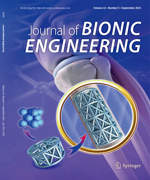The lattice Boltzmann method was employed to simulate electroosmotic driven flow and Debye layer screening in con-ducting electrolyte around a porous structure with average size of 40 nm. The charge screening around the nanopores was investigated by solving the vector-superpositioned potential equilibrium distribution function and adding electro-kinetic force term to the evolution equation. In this intermediate case of moderate Debye length, the electrophoresis problem becomes complicated. The motion of the particles distorts the screening cloud, which becomes asymmetric, resulting in very complex interactions between the electrolyte, the screening cloud and the particle; but the Electroosmotic Flow (EOF) behaviour was still considered based on the Helmoholtz-Smoluchowski model with adaptation to fit nanoporous flow in the porous structure. In the present approach, the flow in the nanopores is directly modelled; the detailed flow information can be obtained by simplifying the repeated macrostructure. Due to the symmetry of the domain, the size of computational domain can be largely reduced by less repeated spherical nanoparticles. Each pore of the medium contains several lattice nodes on the simplified curved edges and potential gradients are produced by adjusting the zeta potential value. The velocity results for pressure-driven and EOF flows agree well with the analytical solutions and recent experimental results. In particular, the interface between solid particles and fluids, the influences of porosity, solid particle diameter, yield stress and electric parameters in EOF were investigated. The anti-adhesion effect of electroosmotic pumping effect was evaluated, and the pulsed DC was applied in order to enhance the performance of the electroosmotic pumping. The results demonstrate that the present lattice Boltzmann model is capable of modelling flow through nanoporous media at certain restrictions while some results deviate from the predictions based on the macroscopic theories.

 Table of Content
Table of Content
 Table of Content
Table of Content